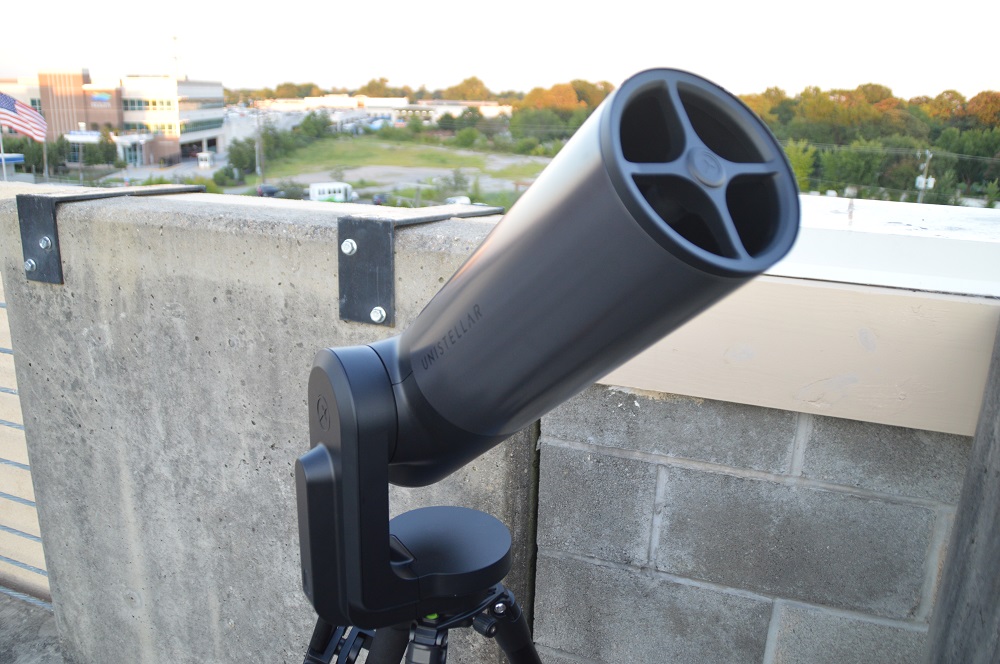Unistellar’s eQuinox 2 is set to continue the smartscope revolution into 2023.
A great telescope just got better. Unistellar just announced the release of its new eQuinox 2. The smartscope will be part of the Unistellar line, joining the eVscope 2 and eQuinox.
The release was announced recently at the Consumer Electronics Show (CES) 2023. The eQuinox 2 Will retail at 2,499$ USD. Like the original eQuinox, the eQuinox2 has no eyepiece, digital or otherwise; everything is viewed and done through your smartphone controller app or tablet.
What's new: The eQuinox 2 features a 114mm mirror and a focal length of 450mm, yielding an f/ratio of about f/4. The Sony imaging sensor is also upgraded from the IMX224 used in the original eQuinox to the IMX347 sensor, increasing it from 4.8 megapixels to 6.2 megapixels. This means a higher resolution, and shorter imaging times needed to achieve the same results. Where this feature is expected to shine is in planetary imaging mode, something that wide-field telescopes typically fall short in. The Sony image sensor upgrade, coupled with the intelligent image processing capability built into Unistellar's Enhanced Vision technology promises to snare and stack moments of good seeing, similar to the 'lucky imaging technique' pioneered by amateur astronomers in the past. The eQuinox 2 also affords a slightly wider field of view than the original at 34 by 47 arc minutes across, ideal for imaging the full disk of the Moon.
The eQuinox 2 features a generous 64 GB of storage, and is highly portable, weighing in at just 9 kilograms plus mount and tripod. Unistellar even sells an optional backpack for its line of telescopes, including the eQuinox 2.
Our experiences with smartscopes has been for the most part positive. We reviewed the eVscope and original eQuinox scopes in the past, as well as Vaonis’ Stellina smartscope.
The Unistellar App that controls the eQuinox 2 promises the user access to a database of thousands of solar system and deep sky objects, and millions of stars. You can also manually aim at right ascension and declination coordinates in the sky, handy for tracking down new comets and asteroids.
One key advantage I like using Unistellar telescopes versus other smartscopes on the market is the simple manual focus using a Bahtinov mask and the large hand dial to the rear of the mirror cell, which allows you to start observing right away. Also, you start getting a sky view immediately as the telescope slews to the first target of the night, rather than waiting for a fixed image to stack.
What can you do with an eQuinox and eVscope? I believe the 'secret power' of smartscopes and their ilk is to bring deep sky astronomy and imaging to the urban masses.
Science with Unistellar
Partnered with NASA and the SETI Institute, Unistellar's line of telescopes allows an observer to become a 'citizen astronomer.' Unistellar users have tracked near-Earth asteroids, followed space missions including NASA's Artemis 1 to the Moon and back, and even traced the light curve of transiting exoplanets.
What a time we're living in, when planets orbiting distant stars are considered targets for driveway astronomers. Be sure to check out Unistellar's new eQuinox 2 smartscope, for out of this world views.
 Universe Today
Universe Today




